#Gaziantep Castle
Explore tagged Tumblr posts
Video
tumblr


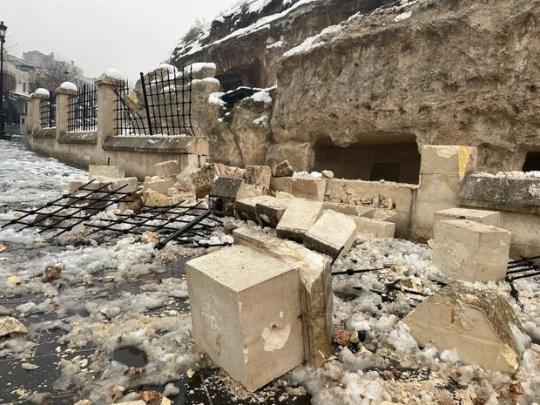

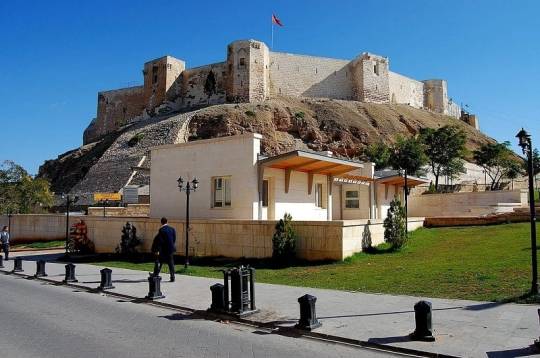

Ancient Gaziantep Castle Used by Romans and Byzantines Destroyed in Turkey Earthquake
An ancient castle in Turkey was one of the historic monuments damaged when major earthquakes hit the country and neighboring Syria, killing more than 2,000 people on Monday. Images show parts of the Gaziantep Castle, which was first built in the 2nd and 3rd centuries AD, during the Roman Empire, crumbling after the earthquake.
The 2,000-year-old castle is located in the Gaziantep region, about 80 miles south of the epicenter of one of the quakes in Kahramanmaras Province.
The castle, an archeological site, sits near the Gaziantep Archeology Museum, which includes works of the Late Hittite and Roman Periods during which the castle was built.
While there is no definitive information about when the castle was fist built, it was founded on top of an earthen mound that dates back some 6,000 years, to when an ancient city called Theban occupied the space.
It is believed to have been constructed as a watchtower during the Roman period between, the 2nd and 4th centuries AD. However, it was built up even more during the 5th century AD during the reign of Byzantine Emperor Justinianus, who was known as the "Architect of Castles."
The Ottomans repaired the castle over time, but it got a second full overhaul by Egyptian Sultan Qaitbay in 1481. There are 12 towers on the castle and the two towers near the main gate were rebuilt in 1557 by Suleiman the Magnificent during the Ottoman Empire.
By Caitlin O'Kane.
#Ancient Gaziantep Castle Used by Romans and Byzantines Destroyed in Turkey Earthquake#Gaziantep Castle#Gaziantep Archeology Museum#Byzantine Emperor Justinianus#Architect of Castles#Suleiman the Magnificent#archeology#archeolgst#ancient artifacts#history#history news#ancient history#ancient culture#ancient civil#roman empire#roman history#ottoman empire#byzantine empire#earthquake
104 notes
·
View notes
Link
9 notes
·
View notes
Photo

Gaziantep Castle was built by the Romans in the 2nd and 3rd centuries. The devastation wrought by Monday's deadly earthquake in south-eastern Turkey included the almost total destruction of the 2,000-year-old castle built during the Roman Empire. Two plus-7 magnitude quakes hit the region on Monday, killing thousands of people in Turkey and Syria.
1 note
·
View note
Text
Devastating Earthquake in Turkey and Syria kills thousands.
2 notes
·
View notes
Text
1,200 Dead After Powerful Quake In Turkey, Syria, "State Of Catastrophe"
Turkey's AFAD emergencies service centre put the first quake's magnitude at 7.4, adding that it was followed by more than 40 aftershocks.

Istanbul: The most powerful earthquake in nearly a century struck Turkey and Syria early Monday, killing over 1,200 people in their sleep, levelling buildings and causing tremors felt as far away as Iraq.
The 7.8-magnitude quake wiped out entire sections of major Turkish cities in a restless region filled with millions of people who have fled the civil war in Syria and other conflicts.
The head of Syria's National Earthquake Centre, Raed Ahmed, told pro-government radio that this was "the biggest earthquake recorded in the history of the centre".
At least 326 people died in government-controlled parts of Syria, according to the latest count.
At least 912 people also died in Turkey, Turkish President Recep Tayyip Erdogan said.
Shocked survivors in Turkey rushed out into the snow-covered streets in their pyjamas, watching rescuers dig through the debris of damaged homes with their hands.
"Seven members of my family are under the debris," Muhittin Orakci, a stunned survivor in Turkey's mostly Kurdish city of Diyarbakir, told AFP.
"My sister and her three children are there. And also her husband, her father-in-law and her mother-in-law."
The rescue was being hampered by a winter blizzard that covered major roads in ice and snow. Officials said the quake made three major airports in the area inoperable, further complicating deliveries of vital aid.
- Election test for Erdogan -
The quake struck at 04:17 am (0117 GMT) at a depth of about 17.9 kilometres (11 miles) near the Turkish city of Gaziantep, which is home to around two million people, the US Geological Survey said.
Turkey's AFAD emergencies service centre put the quake's magnitude at 7.7, updating an initial estimate of 7.4.
Turkish President Recep Tayyip Erdogan, who will be under intense pressure to oversee an effective response to the disaster heading to a tightly-contested May 14 election, conveyed his sympathies and urged national unity.
"We hope that we will get through this disaster together as soon as possible and with the least damage," the Turkish leader tweeted.
Washington, the European Union, and Russian all immediately sent condolences and offers of help.
Turkey also received a message of support from its historic rival Greece, whose relations with Ankara have suffered from a spate of border and cultural disputes.
Ukrainian President Volodymyr Zelensky offered to provide "the necessary assistance" to Turkey, whose combat drones are helping Kyiv fight the Russian invasion.
And Iran, which together with Russia is trying to help Ankara restore its relations with Damascus following its efforts to help oust Syrian President Bashar al-Assad, sent separate messages of condolence to both sides.
- 'People under rubble' -
Images on Turkish television showed rescuers digging through rubble across city centres and residential neighbourhoods of almost all the big cities running along the border with Syria.
Some of the heaviest devastation occurred near the quake's epicentre between Kahramanmaras and Gaziantep, where entire city blocks lay in ruins under the gathering snow.
Kahramanmaras Governor Omer Faruk Coskun said it was too early to estimate the death count because so many buildings were destroyed.
"It is not possible to give the number of dead and injured at the moment because so many buildings have been destroyed," Coskun said. "The damage is serious."
A famous mosque dating back to the 13th century partially collapsed in the province of Maltaya, where a 14-story building with 28 apartments housed 92 people also collapsed.
In other cities, social media posts showed a 2,200-year-old hilltop castle built by Roman armies in Gaziantep lying in ruins, its walls partially turned to rubble.
"We hear voices here -- and over there, too," one rescuer was overheard as saying on NTV television in front of a flattened building in the city of Diyarbakir.
"There may be 200 people under the rubble."
- Power outages -
The Syrian health ministry reported damage across the provinces of Aleppo, Latakia, Hama and Tartus, where Russia is leasing a naval facility.
AFP correspondents in northern Syria said terrified residents ran out of their homes after the ground shook.
Even before the tragedy, buildings in Aleppo, Syria's pre-war commercial hub, often collapsed due to the dilapidated infrastructure, which has suffered from lack of war-time oversight.
Naci Gorur, an earthquake expert with Turkey's Academy of Sciences, urged local officials to immediately check the region's dams for cracks to avert potentially catastrophic flooding.
Officials cut off natural gas and power supplies across the region as a precaution, also closing shools for two weeks.
"The size of the aftershocks, which may continue for days although mostly decreasing in energy, brings a risk of collapse of structures already weakened by the earlier events," David Rothery, an earthquake expert at the Open University in Britain.
"This makes search and rescue efforts dangerous."
Turkey is in one of the world's most active earthquake zones.
The Turkish region of Duzce suffered a 7.4-magnitude earthquake in 1999, when more than 17,000 people died --including about 1,000 in Istanbul.
Experts have long warned a large quake could devastate Istanbul, a megalopolis of 16 million people filled with rickety homes.
The last 7.8-magnitude tremor shook Turkey in 1939, when 33,000 died in the eastern Erzincan provinc
6 notes
·
View notes
Text

With Gaziantep journeys, enjoy visiting Zeugma Mosaic Museum, showcasing stunning artistic pieces, and Gaziantep Castle. and the Copper Market.
https://weghat.net/blog/en/gaziantep-journeys/
0 notes
Photo

Wonder Is Everywhere: Civil War Gold, a New Moai, and More From Around the Web Every other week, Atlas Obscura drags you down some of the rabbit holes we encounter as we search for our unusual stories. We highlight surprising finds, great writing, and inspiring stories from some of our favorite publications. The Mystery of Salvador Dalí's "Visions" by Jacqui Palumbo, CNN.com As curators at the Art Institute of Chicago prepared for an exhibit on Salvador Dalí, they began to worry that one of the paintings in the museum's collection had been incorrectly attributed to the celebrated Surrealist. Their search for the truth led to the discovery of a hidden portrait and a forgotten mural. The Turkish and Syrian Heritage Lost in the Recent Earthquakes by Arie Amaya-Akkermans, The Art Newspaper In the aftermath of two of the largest earthquakes ever to hit the Eastern Mediterranean, as Turkey and Syria struggle to house survivors, recover those still missing, and mourn the dead, the full scope of the the damage to the region's heritage sites is also becoming clear. Among the hardest hit sites: Gaziantep Castle, built in the second millennium B.C. Inside the FBI’s Secretive Search for Civil War–Era Gold in Pennsylvania by Michael Rubinkam, Associated Press In March 2018, the FBI went digging for Union gold believed to have been lost or stolen on its way to the U.S. Mint in Philadelphia in 1863. A federal judge has now ordered the public release of records pertaining to the treasure hunt. The secret is that it isn't over—the FBI says it never found the booty. Did a Giant Ancient Fish Unearthed in South Africa Prey on Human Ancestors? by Sascha Pare, LiveScience Researchers have identified a new species of giant tristichopterid: Hyneria udlezinye, a name derived from "one who consumes" in IsiXhosa, an Indigenous language in South Africa. The voracious predator fish, which lived about 350 million years ago, measured up to nine feet long, and had both fangs and an appetite for tetrapods. "The tristichopterids evolved into monsters that, in all likelihood, ate [our ancestors]," one scientist said. Two Antlers in a Vietnamese Museum Are Actually Ancient Musical Instruments Artnet When they were found in the 1990s, these two 2,000-year-old antlers were consider simply well-preserved specimens from a long-dead Sambar deer or an Indian hog deer. Now researchers have determined they are also the earliest-known stringed instruments from the region. They were perhaps played like a k’ný, a modern single-string Vietnamese instrument known as a "mouth violin." This 500-Year-Old Nordic Shipwreck Still Has a Fully-Stocked Pantry by Sarah Kuta, Smithsonian Magazine When Gribshunden sank in the Baltic Sea off the coast of Sweden in 1495, it was carrying coveted foods and spices, meant as a diplomatic offering from King Hans of Denmark and Norway to the people of Sweden, whom he hoped would make him king of that country as well. Archaeologists have found evidence of 40 different types of fruits, vegetables, spices, nuts, and cereals in the wreck—including 13 ounces of saffron, which has, remarkably, retained its distinctive aroma for 527 years. A New Moai Statue Was Discovered on Rapa Nui by Angeline Jane Bernabe, Erin Brady, Faryn Shiro, and Robyn Weil, Good Morning America Nearly 1,000 moai—human figures carved by the Rapa Nui people centuries ago—have been found on the Polynesian island that shares the name of the people (also known as Easter Island). The newest find, the smallest known, was discovered in a now-dry lake bed on the island, which is dealing with the effects of climate change. The Two Brothers Who Made Helped Preserve Scores of Black Landmarks by Nick Tabor, Washington Post The Washington, D.C., home of Charlotte Forten Grimké—educator, abolitionist, activist, and poet—is just one of 67 Black history sites that became National Historic Landmarks in the 1970s thanks to the research and advocacy of Vincent deForest and his late brother Robert DeForrest, who founded the Afro-American Bicentennial Corp. https://www.atlasobscura.com/articles/wonder-is-everywhere-march-1
0 notes
Text
When the AKP came to power, in the early 2000s, it was little known. Voters embraced it because they were fed up with the old system of governance and its party coalitions, lack of transparency, police violence, and financial inequality. That paved the way for AKP’s messianic promise to create what it came to call a “New Turkey.”
But instead of focusing on shoring up the country, the government has spent the past several years on nationalist campaigns—attacking Kurds in Turkey (nearly 20 percent of the country is of Kurdish origin) and in Syria, and by threatening its neighbor Greece. It has focused on ideology—exhorting women to bear “at least three children” and creating a “pious generation” by opening up many religious schools. It has oppressed dissent by sacking officials who do not align with the party’s conservative views.
In short, it has worked to crush secularism and democracy and turn everything into a symbol of its own rule. It has done this by cultivating, in a largely uneducated and easily manipulated population, nationalism, fear of the other, financial dependence, and unquestioning confidence in a heroic father figure.
This “New Turkey” used infrastructure projects to highlight its break with the past. The more the government built, the more powerful and modern it seemed. It looked toward the skyscrapers of Qatar and Saudi Arabia as models, instead of toward Europe. Favors and contracts and permits were granted to construction companies and businesses close to the party, in exchange for kickbacks and votes. In 2021, in a speech celebrating the completion of a new bridge, Erdoğan said, “Foreigners now view our roads, bridges, and airports with envy when they come to Turkey.” If that was ever true, it isn’t anymore.
Shortly after Monday’s earthquakes, Turkish citizens called out on social media to wealthy real-estate and construction-company owners to bring their earthmovers and other heavy machinery to the wreckage sites while lives could still be saved. After all, aren’t they the ones who ignored building codes to maximize their revenues? Aren’t the roads they made and the houses they built with cheap materials nothing but debris and dust today?
I have often heard, in the aftermath of corruption scandals, some Turkish people say things like Okay, yes, they steal. So what? Every government has stolen from us; at least they give to the people by building bridges, airports, and roads. Now the bridges have broken, the airports are closed, and roads have cracked open as if meteors had fallen on them, preventing emergency help from reaching desperate areas.
In the affected region, a shopping mall is reported to have collapsed, along with a historic mosque, and hospitals were destroyed, forcing patients and caregivers out in the cold. Electricity, fuel, gas, and running water are scarce. Gaziantep Castle, a landmark that stood strong from the Hittite to Roman and Byzantine periods, has been severely damaged. There are reports of mangled Orthodox and Armenian churches, as well as synagogues—sites of worship that were some of the few reminders of a multiethnic history that the government has tried to stamp out.
But it’s difficult to know what exactly has fallen, and what still stands, because in the past few years, the government has shut down many independent media outlets. This morning, Twitter—which people had been using to share information about survivors and their needs—was running slowly in the country, probably because the government had restricted it.
My mother was born in Erzincan, in eastern Turkey, more than a decade after the earthquake of 1939, which killed 30,000 people and remains the most destructive in the nation’s history. In 2017, I went to visit her remote village in the beautiful high mountains; people there still tell stories about the trauma of that earthquake, a trauma carried in every corner of my homeland. What happened this week will be remembered at least as long.
Our republic will turn 100 this year, in October. Presidential and parliamentary elections are to be held in May. Of course, the government did not cause this earthquake; fault lines deep in the earth did that. But on election day, we should stop giving our power to a party that has abused it, that cares more for its own survival than the people’s well-being, and remember the bare hands of rescue workers and residents digging people out from under our cities. Turkey was a construction site. It has become a cemetery. It deserves better.
— Turkey’s Trust in Government Has Turned to Dust
#ayşegül sert#current events#politics#turkish politics#government#corruption#natural disasters#earthquakes#construction#urban planning#housing#2023 turkey-syria earthquake#turkey#justice and development party
1 note
·
View note
Link
Gaziantep Castle has been heavily damaged by quakes that have killed more than 1,000 people
0 notes
Text
One of the first natural disasters of this year hit Turkey on Monday morning. Nearly 5000 deaths have been reported till now. Numberless people are being pulled out of the rubble, and the rescuing teams are working around the clock to save as many lives as possible.
This natural disaster, without a doubt, is one of the biggest of the entire century. When Turkey is suffering from extreme cold, it has been reported that rescuing the survivors and providing food to the needy is more difficult. The consecutive earthquakes have now become a concern for the whole world. The World Health Organisation and United Nations have expressed great concerns regarding Turkey’s earthquake-prone areas. Not only that, now the main concern should be, what has the future stored for us?
Turkey Earthquake, An Overview
The 7.8 Richter scale earthquake that hit Turkey and damaged its ancient architecture has shaken the world, scared it and left people concerned and worried. Any natural disaster cannot just damage the country in focus. It does a lot more than that. Now the prime concern is, will something like this happen again? Will we ever be capable of predicting earthquakes?
The fact is, maybe. But that is a far-fetched reality. For us, now, it is nothing but a dream. Right now, earthquakes are unpredictable. It is what seems the scariest of all.
The first earthquake hitting the Turkey and Syria border was 7.8 on the Richter scale. It is considered the most dangerous natural disaster of the century. Around 5000 deaths have been reported, thousands of people became homeless overnight, and more than 15000 people are reportedly severely injured.
While Turkey has been suffering, the condition of Syria is not so impressive either. The Turkey and Syrian border is full of Syrian refugees. They have been dependent on humanitarian help since the bloody civil war. Moreover, the Syrian people have been dealing with the worst Cholera outrage. Most people are children and women. With the massive earthquake hitting, Syria is in for a whole new crisis as well. In Syria, more than 1400 people died.
Areas Affected By The Earthquake
The first earthquake that hit Turkey on Monday morning was a 7.8-magnitude quake. Its epicentre was Turkey’s Gaziantep province, spreading up to twenty-three kilometres. Its depth was 24.1 kilometres. It has also hit the east of Nurdagi.
However, this was not it. Another shockwave shook Turkey nine hours after the first quake. The aftershock spread up to ninety-five kilometres north of the first epicentre. Now, the magnitude was 7.5. According to the report, the shock was felt by the neighbouring countries of Turkey. Lebanon and Cyprus are two of the countries that felt the aftershock waves.
Even though the third earthquake was of 5.3 magnitudes, it hit Turkey and Syria majorly. The Gaziantep castle is ruined, along with the buildings and houses.
An Overview of The Damage
The recent photos emerging on the Internet are very disturbing. As the day broke, the country that stood tall was now under rubble. Some buildings are flattened, and metal rods and house materials are scattered everywhere. The images of toppled cars and the building falling down have disturbed the people watching the news. The winter storm has made the situation even worse. According to a CNN meteorologist, hundreds of thousands of people have been affected by this. The cold and rainy weather have disrupted livelihood, food supply, and care for children and families.
The Condition of Syria
The earthquake has also affected various parts of Syria. As mentioned earlier, more than 1400 people have been reported dead. According to SANA, a Syrian state news agency, seven hundred and eleven people died around the Syrian Government controlled areas. Aleppo, Tartus, Hama, and Latakia are the most affected parts of Syria.
The Syrian civil Defense group has also reported seven hundred and forty deaths in the non-government-controlled areas. With Turkey experiencing extremely cold weather, sending humanitarian help has become the most challenging thing to do.
Concerns for the aftermath
The United Nations has said that this earthquake is the most disastrous earthquake that hit the country after eighty years. The last earthquake that happened in Turkey was in 1939, killing thirty thousand people. The World Health Organisation has said, “We are especially concerned about areas of Turkey and Syria from which we have no information after the deadly earthquake.”
While the death toll is rising, various countries have offered their help. The United Nations have already activated all its resources and rescue operations to save as many survivors as possible. The Indian Prime Minister, Narendra Modi, has offered all kinds of help to rescue the affected people. The Indian aviation regulator has met with the Indian carriers to send flights to Turkey for cargo movements. Not only that, The Central Government of India has already activated the NDFR team for the rescue operation. It left for Turkey on Tuesday with two Indian Air Force C-17 aircraft from Ghaziabad’s Hindon air base.
When smashed bodies are discovered every minute from beneath the rubble, the whole world is mourning and shocked to see this natural disaster. But, also, they are fearful, thinking, what if the same thing happened again to humanity?
Why Is The Result So Drastic?
Turkey has always been an earthquake-prone country. Turkey, being situated on the Anatolian tectonic plate, which is located between the African and Eurasian plates, is one of the reasons why Turkey is so prone to these massive earthquakes.
Turkey is also one of the countries hit by several earthquakes yearly. But all of them were small. Despite this, the Turkish Government never made much efforts to build earthquake-sustainable homes. Some also believe that Tayyip Erdogan, the Turkish President, has a long-lasting conflict with the Syrian Government. Also, he never had a positive relationship with the people living in the hilly area of the country.
Consequently, development has been almost zero in these places. Some reports also say that the Turkish have never been mentally prepared for experiencing this kind of natural disaster. That is also one of the reasons why people are facing this day.
Karl Lang, an assistant professor of Georgia Tech University’s School, has stated that “it is a very large fault zone, but this a larger earthquake than they have experienced any time in recent memory.”
Turkey, which has always been one of the favourite tourist destinations, has been hit by three massive earthquakes, all a hundred times stronger than one another. It is undoubtedly one of the biggest natural disasters. While the world is scared and mourning, we must consider how these types of disasters could be avoided in the future.
Originally published at https://www.panchayiti.com on February 7, 2023.
0 notes
Text
2,000-Year-Old Castle Destroyed by Powerful Earthquake in Turkey | My Modern Met
By Jessica Stewart on February 7, 2023 Gaziantep Castle prior to the Kahramanmaras earthquake. (Photo: Muhur/Depositphotos) Over 5,000 people have died and nearly 6,000 buildings have collapsed due to the devastating earthquake in Turkey and Syria. When a powerful earthquake struck central Turkey and northwest Syria on Monday, February 6, it caused mass devastation. With a magnitude of 7.8, it…

View On WordPress
0 notes
Text
GAZIANTEP, Turkey — In the southern Turkish city of Gaziantep, the epicenter of Monday’s earthquake, some people fled their homes in the cold and rain and took shelter in their cars when the earth began trembling before dawn.As they waited for it to end, and for the sun to rise, bad news filled their phones before they could see for themselves the damage that had been wrought by the magnitude 7.8 quake that has left more than 1,000 people dead, a toll that was almost certain to rise.One man burst into tears after learning that his brother was stuck under the rubble of a fallen building. Others received news that their homes or those of their relatives were heavily damaged. Many wounded were rushed to local hospitals. The city’s ancient castle was heavily damaged.A security camera in a store in Gaziantep, also known as Antep, captured the moment when the main earthquake struck. Footage showed shelves rattling for at least one minute and 30 seconds, with furniture and appliances falling and shattering on the floor.Davut Gul, governor of Gaziantep, tweeted that the earthquake was “felt severely” in Gaziantep, a city of more than two million inhabitants. He urged people to wait outside for the shaking to end, and to leave the main roads empty.Millions of Syrian refugees in Turkey live outside the city of Gaziantep. Turkey hosts the largest number of Syrian refugees in the world, 3.6 million, according to the United Nations High Commissioner for Refugees, which runs one of its largest operations from Gaziantep.Similar scenes were playing out in other cities and towns across Turkey and Syria after the earthquake, one of the strongest ever recorded in Turkey. Videos on social media verified by The New York Times showed collapsed buildings, crushed cars and emergency services mounting rescue and recovery operations.
0 notes
Text
Parts of Ancient Gaziantep Castle Collapsed in the Earthquake in Turkey
Parts of stone walls and iron railings collapsed around the castle, parts of which date to the second and third centuries, according to a Turkish state-run news agency. source https://www.nytimes.com/2023/02/06/world/europe/gaziantep-castle-earthquake-damage.html
View On WordPress
0 notes
Text
A Turkish castle that has withstood invasions for centuries is damaged by the earthquake
Gaziantep Castle, a historical site and tourist attraction in southeastern Turkey, suffered significant damage from Monday’s earthquake. Mehmet Akif Parlak/Anadolu Agency via Getty Images Hide caption toggle caption Mehmet Akif Parlak/Anadolu Agency via Getty Images Gaziantep Castle, a historical site and tourist attraction in southeastern Turkey, suffered significant damage from Monday’s…

View On WordPress
0 notes
Text
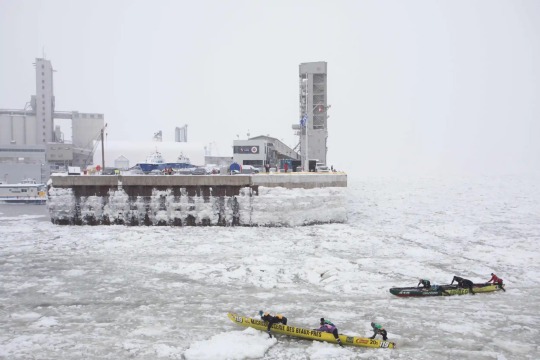
Quebec City, Canada 🇨🇦! Teams compete during the Quebec Winter Carnival ice canoe race. Dozens of teams participate in this race, in which they must cross the St Lawrence River to the city of Levis on the other side and return to their starting point. Photograph: Alexis Aubin/AFP/Getty Images

Los Angeles, California, USA 🇺🇸! Beyoncé performing at the Grammys, where she broke the record for the most Grammys ever won by an artist. Photograph: CBS Photo Archive/CBS/Getty Images

Tynemouth, UK 🇬🇧! People walk their dogs at sunrise along Tynemouth longsands. Photograph: Owen Humphreys/PA
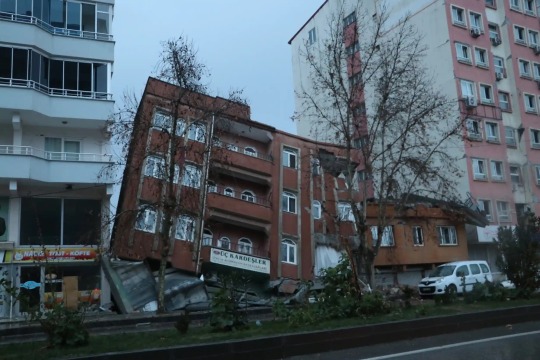
Gaziantep, Turkey 🇹🇷! Search and rescue works continue after a 7.7-magnitude earthquake hit southern provinces. Photograph: Anadolu Agency/Getty Images
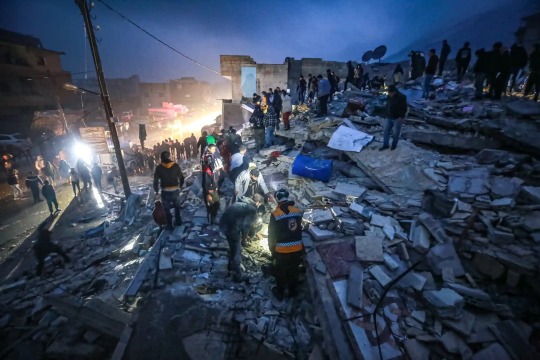
Idlib, Syria 🇸🇾! A 7.4-magnitude earthquake killed hundreds of people and left hundreds more wounded in various parts of Syria. Photograph: Anadolu Agency/Getty Images
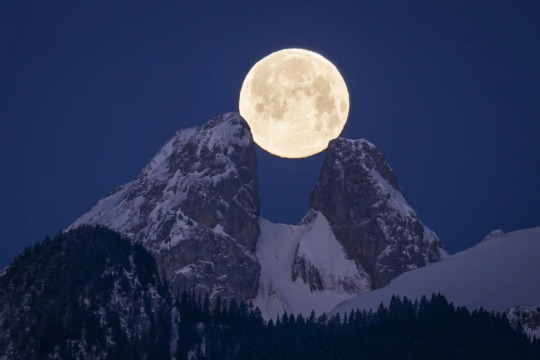
Chablais valaisan, Switzerland 🇨🇭! The full moon sets behind the mountains, including the twin peaks of Les Jumelles. Photograph: Anthony Anex/EPA
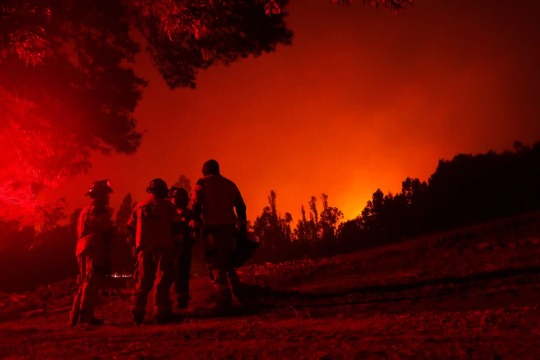
Purén, Chile 🇨🇱! At least 23 people have died in hundreds of forest fires whipped up amid a blistering heatwave in south central Chile. Photograph: Javier Torres/AFP/Getty Images
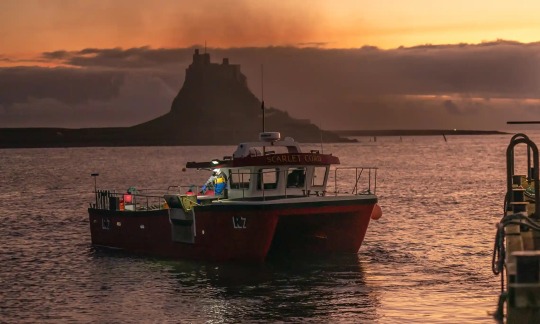
Lindisfarne fishing: Is it the end of the line for these British fishers? UK 🇬🇧! Fishing supports 15 families on Lindisfarne, but their livelihoods are threatened by the highly protected marine area (HPMA) proposed by Defra, as fishing would be banned inside the 129 sq km zone. A fishing boat returns to harbour on Lindisfarne as the sun sets, with the island’s 16th-century castle providing a dramatic backdrop
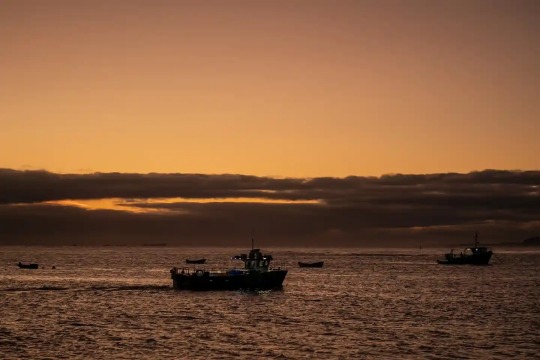
Lindisfarne fishing: Is it the end of the line for these British fishers? UK 🇬🇧! Fishing supports 15 families on Lindisfarne, but their livelihoods are threatened by the highly protected marine area (HPMA) proposed by Defra, as fishing would be banned inside the 129 sq km zone. A fishing boat returning to Lindisfarne harbour after a day at sea

Lindisfarne fishing: Is it the end of the line for these British fishers? UK 🇬🇧! Fishing supports 15 families on Lindisfarne, but their livelihoods are threatened by the highly protected marine area (HPMA) proposed by Defra, as fishing would be banned inside the 129 sq km zone.
0 notes
Text
トルコ南東部の地震のニュースを追ってしまう。被害は甚大だ。日本に置き換えると、震源地が名古屋なのに千葉の建物が倒壊するくらい被害範囲が広すぎる。余震もM7クラスで震源も浅く��自然の猛威と人間の無力を感じてしまう。
震源に近い街ガズィアンテプの城が地震で崩れたとのニュースを見た。ローマ時代からの歴史ある城。
ガズィアンテプ城は去年の10月に訪れた。城には登らず夜のライトアップを外から眺めただけ。ガズィアンテプ自体の滞在時間が短く、それでいて見どころや名物を欲張ったら自然と時間がなくなった。登っておけばよかったか。それでも町のシンボルとして人々が誇りを持っていることは通りがかりレベルでも十分に伝わった。

町名を掲げた看板には必ずと言っていいほどガズィアンテプ城のシルエットがデザインされていた。町のシンボルが崩れるとの心痛はいかばかりか。
城の周辺にはマーケットが立ち並ぶ。金属工芸品をはじめとして、陶器や布製品やガラス香水瓶が所狭しと並んでいた。爆買いした。しかもイスタンブールの2〜3分の1くらいの超良心的な値段。


我が家にある陶器やガラス香水瓶の仲間たちは、地震で壊れていてもおかしくない。難を逃れてはるばる1万km先の我が家に辿り着いてくれたのだろうか。


現地で会った人々の顔が浮かぶ。写真を一緒に撮ろうと言ってくれたガラス香水瓶のお店のお姉さま、言語通じない謎の東洋人を迎えてくれたハマムのお姉さま、路線バスを捕まえるのを手伝ってくれたおじさま。きついなぁ……。
一人でも多くの方が無事であることを祈る。
0 notes